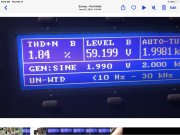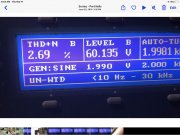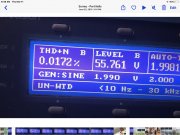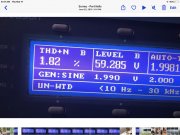Whoa Nellie...
Technically, you are correct; but in practice that never happens. True, the total rail voltage in a PL700 is 200 volts and this does not change after a WOPL upgrade. But to say the power output is controlled by the rail voltage is incorrect. It would be more correct to say the output is "limited" by the rail voltage; and at 200 volts, that theoretical power would be 5000 watts (200 volts x 200 volts / 8 Ohms = 5000 watts) or 2500 watts per channel. It just ain't so.
Now the magic of the WOPL upgrade is the increased efficiency in the front end and the higher SOA of the newer outputs. I routinely measure power output before the WOPL upgrade for my customers and have recorded voltages at the output of 52 vrms, 54 vrms, and 56 vrms per channel (338 watts, 364 watts, and 392 watts). After the WOPL upgrades, I was able to record output voltages of 62 vrms, 63 vrms, and 66 vrms (480 watts, 496 watts, and 545 watts). The peak power ratings are even higher, given the increased headroom and the ability to handle an increased input without clipping.
How is this possible? Closer tolerances during manufacturing, increased consistency, and design improvements thanks to WOA.
Try it yourself and see what your WOPL will produce. I would be surprised if you record less than 62 vrms at one channel when driven by a 1kHz signal at 2 vrms. There will be no clipping.
For a WOPL 400, you should be able to see the stock output of 44.72 vrms increase to at least 50 vrms (312 watts) per channel with no clipping.




